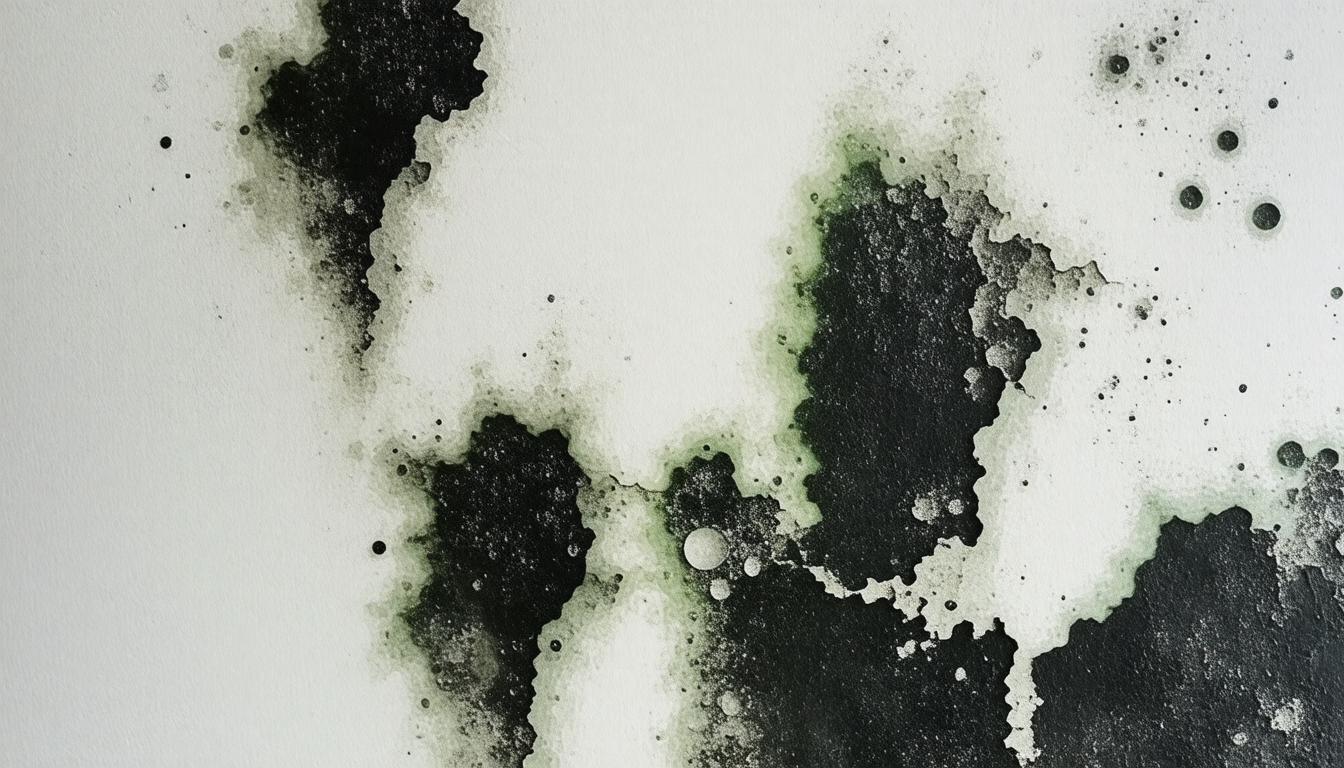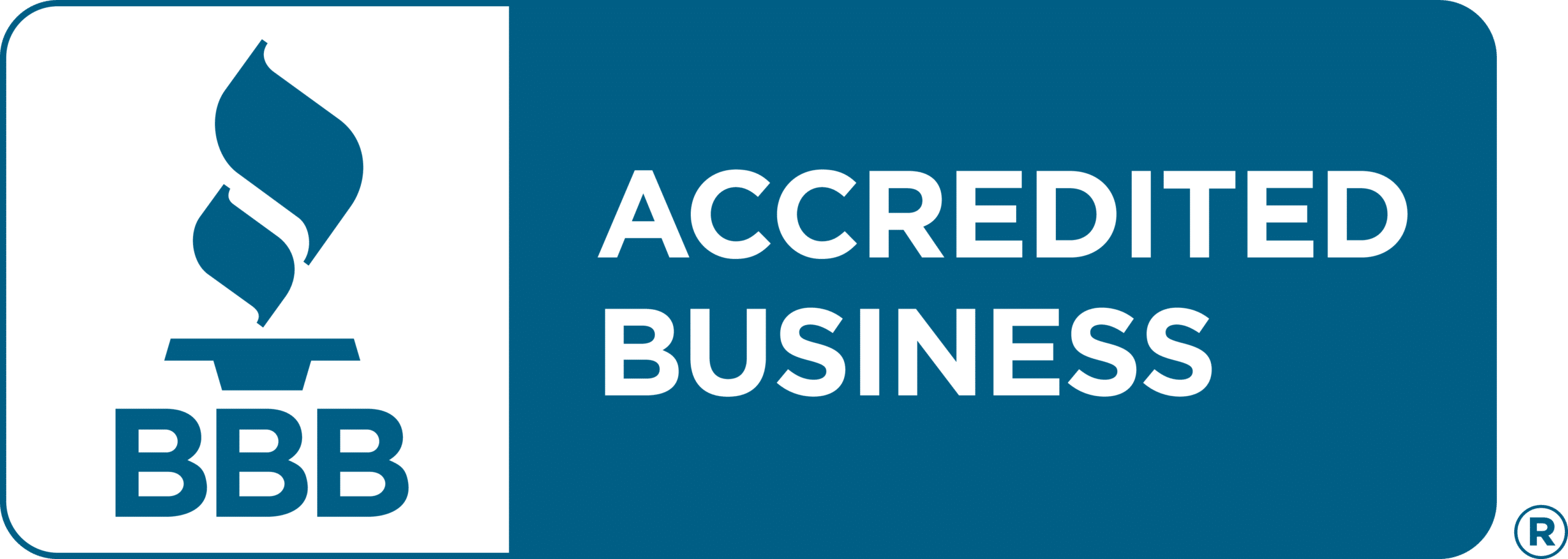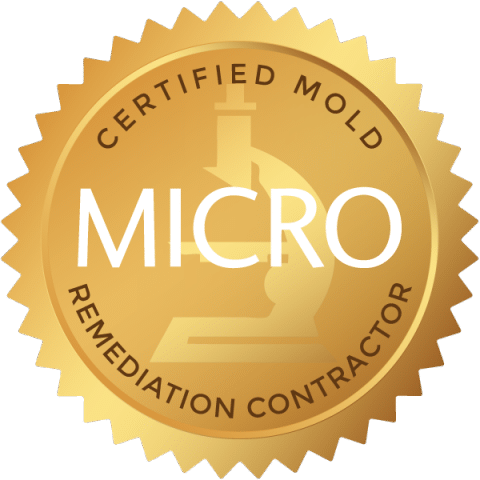Discover Health Effects of Mold Exposure: Risks and Remediation Tips
Mold often lurks quietly in the corners of our homes, and many of us don’t realize just how damaging it can be until health problems arise. While a bit of mold may seem harmless, like a small blemish on an otherwise perfect wall, the reality is that it can trigger serious health issues, from sneezing and coughing to more severe respiratory problems. You might wonder, “How could something so unassuming make me feel so bad?” The truth is, mold affects everyone differently, and not all molds are created equal. This article dives into exactly what mold can do to your health, where it’s likely to grow in your home, and most importantly, how you can keep your living space safe and healthy for yourself and your loved ones. So let’s get started!
Mold exposure can lead to a variety of health issues, particularly respiratory problems such as asthma, allergic reactions, and chronic sinus infections. Individuals with weakened immune systems may face more severe consequences, including infections and other serious ailments related to their existing health conditions.
Schedule a mold inspection in Los Angeles
Mold Growth: Causes and Conditions
The perfect storm for mold growth often stems from a combination of high humidity and moisture accumulation. High humidity levels, particularly those above 60%, create an ideal breeding ground for mold spores. This humidity can arise from various sources around the home, such as leaks in pipes or roofs, flooding, or even everyday household activities like cooking and showering. It’s fascinating to think about how our daily routines contribute to this issue, isn’t it?
For instance, when you take a hot shower without proper ventilation, steam fills the room, raising the humidity level significantly. If your bathroom lacks an exhaust fan or window to let this moisture escape, the conditions become ripe for mold. Such scenarios are commonplace in many households but are often overlooked until visible signs of mold appear. This is why awareness plays a critical role in prevention.
Another contributing factor is inadequate airflow. Stagnant air found in musty spots, like poorly ventilated closets or basements with little circulation, can exacerbate mold issues. Natural airflow helps to disperse moisture; however, tight spaces allow it to accumulate, fostering mold growth over time on surfaces like drywall and wood.
Some common surfaces where mold could flourish include wood, carpets, food products left exposed, and even insulation materials within walls or attics.
Understanding local climate also lends itself to better preparedness. In humid regions like Los Angeles or Southern Orange County, seasonal changes can introduce excess moisture into homes as rain or humidity rises. Homeowners need to be vigilant during these months to ensure proper waterproofing and leak detection efforts are in place.
Companies specializing in water intrusion detection and remediation often emphasize the importance of regular inspections for mitigating potential mold growth sources. Frequent checks can pinpoint minor leaks that would otherwise go unnoticed until they lead to significant problems.
While understanding the growth conditions is crucial, identifying where these molds typically find their footing is equally important. Becoming informed about where mold is likely to thrive enables us to better manage our environments effectively.
Find the best mold inspector in LA
Common Sources of Mold Exposure
Mold is notorious for being elusive, frequently taking root in less-visited areas of our homes. One of the most common places for mold to establish is in bathrooms. The combination of high humidity from showers and a lack of airflow creates a perfect breeding ground. As moisture lingers on the walls and fixtures, you may start to see black or green patches appear, especially in corners or around taps. To combat this, it’s advisable to use exhaust fans during and after showers, keeping the air moving to reduce humidity levels.
Moving into the kitchen, a hub for activity, one might be surprised at how easily mold can thrive here as well.
In kitchens, mold can originate from sources like leaky pipes beneath sinks, spills that go unnoticed, or even food leftovers left too long in the fridge. These factors contribute not only to unpleasant odors but also create an environment ripe for mold growth. It’s key to regularly check under sinks and clean out your refrigerator, disposing of any expired food items promptly. Small leaks should be addressed immediately to prevent larger issues down the road.
Let’s not overlook another critical area: the basement.
Basements are frequently damp and dark, thanks to insufficient insulation and potential leaks from outside sources. These conditions are ideal for mold to flourish without notice. Performing routine inspections for leaks, standing water, or condensation will help keep this area dry. You may also consider using dehumidifiers during humid months to decrease hidden basement moisture levels significantly. Remember, a dry basement is essential not just for home maintenance but also for health reasons; the last thing you want is a hidden mold colony affecting air quality!
Speaking of hidden dangers,
Roof and attic spaces can also pose unforeseen risks for mold exposure. A leaky roof or condensation problems can make these areas especially vulnerable. Water that seeps in creates a moist atmosphere that molds favor, often leading to significant structural damage over time. It’s vital to conduct regular checks on your roof for leaks and ensure proper ventilation in your attic space, allowing moisture to escape rather than settle on materials within.
A crucial point to remember is that mold spores have a knack for traveling indoors through windows, vents, and heating or cooling systems. According to research by the American Society of Microbiology, about 70% of homes contain some form of mold.
Recognizing these prevalent sources plays a vital role in both maintaining the integrity of your home and understanding how environmental factors can influence health conditions associated with mold exposure.
Health Risks Associated with Mold
Mold exposure can harm anyone, but individuals in vulnerable populations, such as children, the elderly, and those with preexisting respiratory conditions or compromised immune systems, often face greater challenges.
For instance, children may have underdeveloped lungs, making them particularly sensitive to mold spores. In contrast, older adults may experience decreased lung function or weakened immune responses, rendering them more susceptible to illnesses linked to mold exposure. It’s crucial to identify these groups to ensure they take precautions or seek prompt remediation when mold issues arise.
Respiratory Issues
When it comes to respirational health, the effects of mold can start very subtly, leading to severe complications over time.
Initially, mild symptoms like coughing, sneezing, and a runny or stuffy nose can occur due to exposure. These symptoms may easily be dismissed as seasonal allergies or common colds. However, continuous exposure without intervention could escalate into more serious health concerns. For instance, mold-induced asthma has become increasingly recognized in medical literature; it manifests through wheezing, shortness of breath, and chest tightness.
Prolonged exposure can also lead to chronic conditions such as bronchitis, characterized by persistent cough and production of mucus that lingers long after initial exposure.
To underscore the importance of awareness: The CDC states that about 10% of the population suffer from mold allergies, highlighting just how prevalent this issue is.
Other Health Effects
Beyond respiratory complications, mold can create additional health burdens. For example, people exposed to high concentrations of certain molds could develop infections in their lungs, particularly in individuals who are immunocompromised. Furthermore, mycotoxins produced by some fungi can lead to cognitive impairments or neurological symptoms in sensitive individuals, everything from headaches to memory loss can stem from mycotoxin exposure.
Mold is not just an aesthetic problem; it represents a pressing health concern that warrants immediate attention, especially for those at higher risk! Suspecting mold growth in your environment should trigger an inspection and a remediation plan as a priority for preserving overall health and safety.
As we examine the broader implications of mold exposure and its specific risks, it’s important to recognize the unique sensitivities of different populations.
Identifying Vulnerable Groups
Mold does not discriminate; it can flourish in any environment where moisture is present. However, its effects are not uniform across all populations. Certain groups, including children, the elderly, individuals with pre-existing respiratory conditions such as asthma, and those with weakened immune systems, stand at a greater risk when exposed to mold. Children, for instance, have developing bodies that make them particularly sensitive to environmental hazards.
A staggering 44% increase in asthma development among children exposed to mold early in life underscores this vulnerability.
Similarly, the elderly often have less resilient immune responses, making them more susceptible to infections or complications from mold exposure. Those suffering from autoimmune diseases or undergoing treatments that compromise their immune systems, like chemotherapy, face heightened risks too. Even minor symptoms in these individuals can escalate quickly if mold is present in their environments.
The impact of mold can also vary based on genetic predispositions and existing health conditions. For example, someone with chronic obstructive pulmonary disease (COPD) may experience exacerbated symptoms due to mold exposure, while others might suffer from allergic reactions without realizing the underlying cause.
On the flip side, some may dismiss mold issues as trivial or “just an allergy,” but this overlooks significant long-term implications on health and well-being, a misjudgment that can lead to serious consequences.
The story of Jack, a healthy 30-something who faced sudden respiratory distress tied to newfound mold in his apartment, illustrates how unexpected exposures can disrupt lives drastically. He learned the hard way that anyone can be affected by mold, especially when unrecognized by oneself. Here are some reasons Mold Inspection Is Critical Before Buying.
Recognizing these vulnerable populations emphasizes more than ever the need for targeted remediation efforts within communities.
Effective prevention measures tailored to these at-risk groups are essential; they include routine inspections for potential water leaks and dampness, common precursors to mold growth, and swift action when water damage occurs. By educating and equipping vulnerable populations with information about mold awareness and safe remediation techniques, we empower them to protect their health proactively.
With an understanding of the groups most at risk, it’s crucial to explore proactive measures that can mitigate these dangers moving forward.
Effective Prevention Strategies
Keeping your home mold-free is all about managing the environment where mold thrives. A critical element lies in controlling humidity levels within your home. Ideally, you should aim for indoor humidity to stay between 30-50%, which is comfortable yet low enough to discourage mold growth. Utilizing dehumidifiers can significantly help maintain these levels, especially in humid climates or basements. When moisture is kept at bay, the likelihood of mold rooting itself in your home diminishes remarkably.
Another effective strategy includes the use of exhaust fans. Areas like kitchens and bathrooms are notorious for being moisture-heavy due to cooking and showering activities. By ensuring these spaces have working exhaust fans, you can quickly expel excess moisture from the air. Think of it as opening a window on a humid day to let the fresh air circulate, you’re providing a better atmosphere for your home while protecting it from mold.
As we discuss these proactive approaches, it’s also important to address taking immediate action on water issues before they escalate.
That leads us to the necessity of fixing leaks promptly. Whether it’s a small leak under the kitchen sink or an unnoticed drip from the roof, ignoring water problems allows them to worsen over time. Even minor leaks can lead to unexpected mold growth hidden behind walls or beneath sinks. Whenever you notice a leaky faucet or damaged plumbing, prioritize repairs immediately. The quicker you act, the lower your chances become of harboring an expensive mold problem down the road.
Remember: Mold isn’t just a nuisance, it’s a potential health hazard that can affect everyone. Prioritizing prevention will save you time and money in the long run.
Lastly, consider regularly checking areas that are often overlooked for moisture such as under sinks or along windowsills. Conducting routine inspections can help you catch potential issues before they turn into a full-blown infestation and provide peace of mind regarding your living environment.
Incorporating these prevention strategies into your home maintenance routine is essential in protecting yourself and your loved ones against harmful molds.
Understanding how to effectively mitigate these risks plays a crucial role in creating a safe living space, leading us to explore methods for effective mold removal and remediation.
Remediation Tips for Mold Removal
When it comes to mold remediation, precision and care are crucial. The process may seem daunting, but with an organized approach, you can tackle it effectively. First and foremost, you must identify affected areas. Use tools such as moisture meters or infrared thermography to pinpoint hidden moisture that contributes to mold growth. It’s vital to inspect both visible and concealed spaces since mold thrives in warm, damp environments, think behind walls or under floorboards.
Once you’ve identified these trouble spots, the next step is to contain the mold. Sealing off the area with plastic sheeting prevents spores from spreading during cleanup. It’s akin to putting up a quarantine zone, it keeps the problematic spores contained while you work on elimination. To enhance this containment, consider using an air purifier equipped with HEPA filters. These devices capture airborne spores and dust, filtering them before they disperse throughout your home.
After you’ve contained the mold, it’s time for perhaps the most hands-on part: removing the mold itself. For hard surfaces, think walls and countertops, scrub diligently using a mixture of detergent and water. A stiff brush can be instrumental in ensuring you eliminate every trace of mold. However, keep in mind that some materials like ceiling tiles or carpets may be beyond recovery due to extensive contamination; they often need to be completely replaced. As difficult as this might sound, it’s important for your health and safety.
If the mold infestation is particularly severe or reaches beyond your comfort level in handling, don’t hesitate to reach out to professionals such as Absolute Maintenance & Consulting at Absolute Maintenance & Consulting. Their expertise not only ensures thorough remediation but also provides peace of mind through years of industry experience.
Additionally, utilizing protective gear while you work is essential. Wear gloves, goggles, and a mask to guard yourself against potential spore inhalation during the cleanup process. Remember that safety should always come first.
Having grasped these detailed remediation tips equips you with the knowledge needed to address mold effectively while considering the related health risks involved; it’s now important to explore how such exposure can impact your well-being.
Medical Treatment for Mold Exposure Symptoms
Addressing mold exposure often begins with recognizing the symptoms it may trigger. For mild reactions such as a runny nose or sneezing, over-the-counter antihistamines can be quite helpful. These medications work by blocking histamines in the body, alleviating discomfort. However, if symptoms persist or worsen, more serious interventions might be required.
Corticosteroids can be prescribed to help reduce inflammation in the airways or nasal passages, making breathing much easier.
In cases of mold-induced asthma, healthcare providers frequently prescribe inhalers. These bronchodilators open up the airways, providing immediate relief from wheezing and shortness of breath. Depending on individual cases, doctors may also recommend preventative inhaler medications that patients can use regularly to manage their symptoms effectively.
“Patients with mold sensitivity should limit exposure and seek medical advice promptly to avoid chronic conditions,” advises Dr. Jane Doe, a pulmonologist.
It’s critical to consult healthcare professionals when dealing with any symptoms associated with mold exposure. A thorough examination and proper diagnosis are key in establishing an effective treatment tailored to your needs.
| Symptom | Mild Treatment | Severe Treatment |
| Runny Nose | Antihistamines | Nasal Corticosteroids |
| Sneezing | Antihistamines | Immunotherapy |
| Mold-induced Asthma | Bronchodilators | Long-term inhaler treatment |
| Skin Irritation | Topical Anti-fungal creams | Prescription-strength Corticosteroid ointments |
Being aware of these medical treatments emphasizes the significance of preventing mold exposure altogether, which is why partnering with experts from Absolute Maintenance & Consulting for inspections and remediation services can be a great investment in your health and home.
By understanding the health effects of mold exposure and knowing how to address its symptoms, you empower yourself to take proactive steps for prevention and recovery. If you suspect mold in your environment, don’t hesitate to reach out for professional help, contact us at Absolute Maintenance & Consulting or call +1 (310) 678-4345 today!
What steps should be taken if someone believes they’ve been exposed to harmful levels of mold?
If someone believes they’ve been exposed to harmful levels of mold, they should first remove themselves from the affected environment to prevent further exposure. Next, it’s essential to seek medical attention, especially if symptoms like respiratory issues or allergic reactions occur; according to the CDC, around 10% of allergic reactions in sensitive individuals can be attributed to mold exposure. Afterward, consult a professional for mold remediation to safely eliminate the mold and prevent future growth, as DIY methods can sometimes worsen the situation.
How can individuals determine if they are sensitive or allergic to certain types of mold?
Individuals can determine if they are sensitive or allergic to certain types of mold by observing their symptoms in response to mold exposure and consulting with a healthcare professional for allergy testing. Common indicators include respiratory issues, skin irritations, and sinus problems that worsen in damp environments. According to the American Academy of Allergy, Asthma & Immunology, approximately 10% of the population is sensitive to mold, highlighting the importance of recognizing personal reactions and seeking diagnosis for effective management.
What specific symptoms are associated with short-term vs. long-term exposure to mold?
Short-term exposure to mold can lead to symptoms such as sneezing, runny or stuffy nose, itchy eyes, and skin rashes, which are particularly common in individuals with allergies. In contrast, long-term exposure may result in more severe health issues, including chronic respiratory problems, asthma exacerbation, and even neurological effects like memory loss in some cases. According to the Centers for Disease Control and Prevention (CDC), around 10% of people exposed to mold may develop serious health complications over time, highlighting the importance of effective mold remediation strategies.
Are there preventative measures that can be taken to reduce the risk of mold growth in homes?
Yes, there are several preventative measures that can significantly reduce the risk of mold growth in homes. Maintaining a humidity level below 50%, using dehumidifiers in damp areas, ensuring proper ventilation in bathrooms and kitchens, and promptly fixing leaks can help prevent mold proliferation. According to the Environmental Protection Agency (EPA), controlling moisture is the most effective way to prevent mold growth, as more than 50% of homes in America may have conditions conducive to mold, reflecting the importance of these measures for health and safety.
What populations are most at risk for serious health effects from mold exposure?
Populations most at risk for serious health effects from mold exposure include individuals with pre-existing respiratory conditions, such as asthma or chronic obstructive pulmonary disease (COPD), young children, the elderly, and those with weakened immune systems. According to the Centers for Disease Control and Prevention (CDC), people with these vulnerabilities may experience heightened sensitivity and exacerbate existing health issues, leading to severe respiratory problems, allergic reactions, or infections. As mold can proliferate rapidly in damp environments, it is crucial for these at-risk groups to minimize their exposure by maintaining a dry living space and addressing any mold growth promptly.







